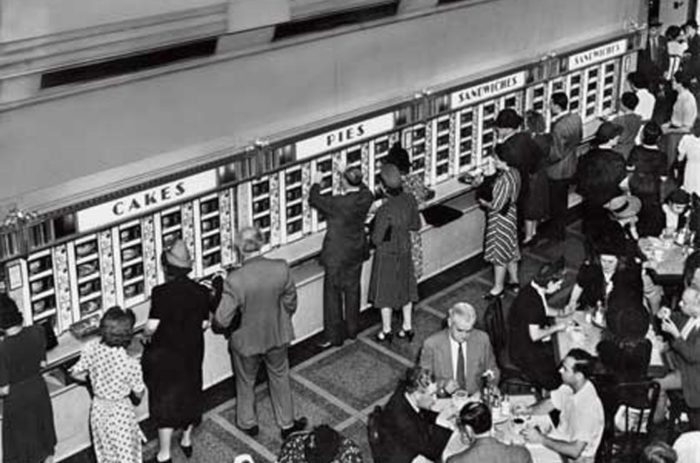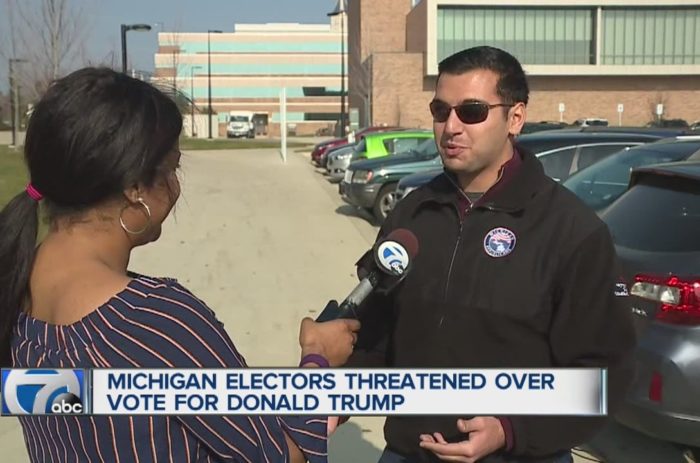
The following is an excerpt from OpinionJournal’s “Best of the Web” at The Wall Street Journal written by the editor, James Taranto.
Question and Answer
- “Ask a Native New Yorker: What Should I Do When I See Someone Acting Racist?”—headline, Gothamist, Nov. 11
- “Female Anti-Bullying Ambassador, 23, Arrested at Trump Tower Protest for Pushing Man, 74, to the Ground in Fight Over the New President-Elect”—headline, DailyMail, Nov. 11
The Emerging Republican Supermajority
Charles Schumer had a dream. With Nevada’s Harry Reid retiring, New York’s Schumer was in line to become leader of the Senate Democrats—and likely Senate majority leader, given the disarray among Republicans, what with their unelectable presidential nominee.
It did not happen. Republicans lost two seats but are assured of at least 51 in the new Congress—52 barring an upset in next month’s Louisiana run-off. And of course the unelectable Donald Trump was elected. Schumer must feel like Charlie Brown during football season, or Charlie the Tuna: “Sorry, Charlie.” No wonder he goes by Chuck.
It was not wrong to think the Republicans were in something of a state of disarray. The mistaken assumption that Trump was unelectable, combined with the no-doubt-accurate one that the GOP Senate majority was at risk encouraged a sort of every-man-for-himself mentality. “Is Split-Ticket Voting Making a Comeback?” asked a Washington Post headline during the August Trump slump. “With Trump on the Ballot, Some Republicans Hope So.”
The New York Times scooped the Post by some 3½ months, with a story on April 29—a few days before Trump secured the nomination—titled “Wary of Trump Effect, Republicans Hope for Split Tickets”:
Republican senators like [Pennsylvania’s Pat] Toomey who are running in swing states—about six, and enough to tip the balance of power in the Senate—need voters who would reject Donald J. Trump to nonetheless pull the levers for the party’s other candidates in November. . . .
But ticket-splitting voters in federal races have become increasingly rare over the last two decades, hitting a low in 2012, when only 10 percent of [voters] divided their votes between parties. That was down sharply from 1972. The ranks of straight-ticket voters have expanded along with the rise in partisanship and its attendant rancor in Congress.
So what happened? The Daily Caller’s Blake Neff offers an interpretation favorable to Trump:
Overall, there were eight Republican-held seats and one Democrat-held seat that were competitive going into Tuesday night: Illinois, Wisconsin, North Carolina, New Hampshire, Nevada, Florida, Indiana, Pennsylvania, and Missouri.
Of the nine Republicans in these competitive races, six of them stood by Trump or, in the case of Pennsylvania’s Pat Toomey, didn’t reject him. Three of them, though, explicitly rejected Trump: Kelly Ayotte in New Hampshire, Mark Kirk in Illinois, and Joe Heck in Nevada.
The final results are telling: The three candidates who rejected Trump all lost, while the rest triumphed.
“False,” responds the Weekly Standard’s John McCormack:
If there had been a price to pay for ditching Trump, you would expect that these candidates would’ve lost by more than Trump, but they ran about even with him. In Nevada, Heck and Trump each lost lost [sic] by 2.4 percentage points. In Illinois, Kirk lost by 14.2 points; Trump lost by 16.0. In New Hampshire, Ayotte lost by 0.1 points; Trump lost by 0.3.
There aren’t any Senate races in which GOP candidates rejected Trump and performed worse than him, but there are examples of Republican candidates who rejected Trump and did much better than him.
In Ohio, Rob Portman announced in the wake of the Access Hollywood video, just like Kelly Ayotte, that he couldn’t vote for Trump and would write in Mike Pence. Portman won Ohio by 21.4 points; Trump won by 8.6.
In Arizona, John McCain likewise dropped Trump after the Access Hollywood video. McCain won by 12.3 points; Trump won by 4.1.
McCormack has a somewhat better argument here: Neff is cherry-picking by considering only “competitive” races and omitting Portman and McCain, both of whom were thought to be endangered at various times during the campaign.
On the other hand (as McCormack acknowledges), there were successful Senate candidates who ran considerably behind Trump: Missouri’s Sen. Roy Blunt (by 15.9 percentage points) and Indiana’s Rep. Todd Young (9.6). Blunt and Young both backed Trump.
And it’s not surprising that Senate candidates, especially incumbents—i.e., all the Republicans mentioned here, except Reps. Heck and Young—would tend to run ahead of the presidential nominee, since they are free to run campaigns tailored to voters of the state. (Though a corollary of most Republican Senate candidates’ running ahead of Trump is that most Democratic Senate candidates ran behind Hillary Clinton.)
But Neff and McCormack both miss the bigger story, which FiveThirtyEight’s Harry Enten noticed: In all 33 Senate races decided on Election Day, the winner was from the same party as the presidential candidate who carried the state. If, as expected, Republican John Kennedy wins the Louisiana runoff, it will be 34 out of 34. That did not happen in any of the 25 previous presidential elections since the 17th Amendment established popular election to the Senate—not even in 1920.
A similar pattern holds in the House. All 30 of the states Trump carried (assuming he holds on in still-uncalled Michigan) will have majority-Republican House delegations in the new Congress. Of the 20 states Mrs. Clinton carried, 17 House delegations will be majority-Democrat. Two (Colorado and Virginia) will be majority-Republican. Maine will be evenly split, with one representative from each party, and Trump took one electoral vote there, from the Second District of Republican Bruce Poliquin.
The Senate trend does not bode well for Schumer’s hope of becoming majority leader. In 2012, Democrats won Senate races in five states Mitt Romney carried: Indiana, Missouri, Montana, North Dakota and West Virginia. (Republicans took one seat in a state President Obama carried, Nevada.) Those seats are up in 2018, as are Democratic seats in the Trump states of Florida, Ohio, Pennsylvania, Michigan and Wisconsin.
If 2018 is a repeat of 2016—that is, if all Trump states elect Republican senators and all Clinton states elect Democratic ones—Republicans will gain nine seats, giving them a total of 61 (or 60 in the event of a Louisiana surprise), a supermajority sufficient to stop a filibuster, assuming filibusters still exist, more on which below.
To be sure, that’s a big if. For the past quarter-century, the president’s party has tended to do poorly in midterm elections, losing Senate seats in 1994, 2006, 2010 and 2014 and gaining them only in 2002 (1998 was a wash). But it is equally true that the Democratic Party has done poorly in midterms, gaining seats only in 2006.
Further, the 2010 and 2014 midterm results turn out to have been strongly predictive of the 2016 presidential ones. In 2010 only three states’ Senate outcomes differed from the 2016 presidential results—Illinois and New Hampshire, the two seats the GOP lost this year, and West Virginia, a special election for the same seat Democrats held in 2012. In 2014 the total was three states, with Republicans taking seats in Colorado and Maine and a Democrat in Michigan.
Even if the trend away from Senate-presidential splits proves durable, no doubt many seats will remain competitive. Trump carried six states with less than 50% of the vote: Arizona, Florida, Michigan, North Carolina, Pennsylvania and Wisconsin. On the other hand, Mrs. Clinton failed to top 50% in seven states she carried: Colorado, Maine, Minnesota, Nevada, New Hampshire, New Mexico and Virginia.
Demographic changes could yet move states like Arizona, Florida and North Carolina into the Democratic column. And the biggest wild card will be President Trump: If he and the Republicans overreach or fail, Democrats could come roaring back. Still, the GOP’s prospects in the Senate look much better than the Democrats’ for the simple reason that there are more Republican states. Even in 2008, the closest election to a landslide since 1988, John McCain carried 22 states.
Which raises some interesting implications for Schumer, assuming the Democrats choose him as their leader. In the past, the Senate minority leader’s job has been among the most powerful in Washington under the circumstances that will prevail next year—namely, a president and House controlled by the other party and a Senate majority short of 60 votes. By holding together, the Senate minority could block anything via filibuster—and Schumer would be able to lose as many as seven votes while doing so.
But the filibuster ain’t what it used to be. In 2013 Reid’s Democrats used what is called the “nuclear option” to abolish it for all nominations except Supreme Court justices. The Republicans could do the same if the Democrats try to block an appointment of a successor to Justice Antonin Scalia—or, for that matter, a GOP legislative initiative such as a repeal of ObamaCare.
Thus if the Democrats wish to preserve the filibuster, they will forbear from employing it. Either way, the result of Majority Leader Reid’s power play in 2013 will have been to render Minority Leader Schumer all but powerless in 2017.
For more “Best of the Web” from The Wall Street Journal’s James Taranto click here.



